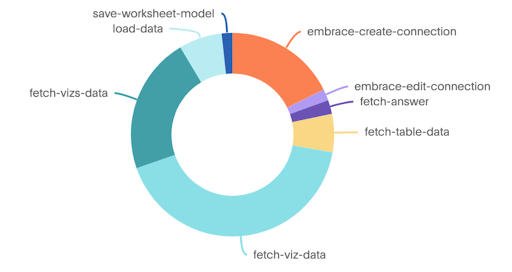Enabling customers and users to quickly find the value within a product is critical for many organizations and at the heart of being a product manager. The approach to driving user growth involves a growth mindset, combining qualitative and quantitative research methods, and driving impactful solutions.
Adopting a growth mindset
Once an organization has built out its core product and primary features, it becomes necessary to focus on growth. That means optimizing the product so that users can gain more value out of it rather than just continuing to build new features.
As part of the growth process in product management, we first identify a goal we want to pursue with a specific metric to improve. Then, we research to understand the user behaviors and challenges. And finally, we develop and implement solutions to address these challenges.
Quantitative and qualitative data in product management
Quantitative data helps us understand what is happening. For instance, where are most of the users coming from? How many users are there? How many of them are moving from activation to the next step of the product? How many are being retained after a month? Looking at quantitative data is critical for identifying opportunities for growth. Perhaps, you find that 1000 users are creating an account on your website, but only 200 of them are actually logging in. This provides a clear opportunity for your team to visit why this is occurring and try to improve the log-in rate.
To understand the why behind this quantitative data, you may dig into further quantitative data. Are people not logging in because they’re not receiving their activation email? Did they have trouble creating a password? Did they run into other problems? Tracking and measuring this data can help you identify the problem and come up with solutions, but often, we as product managers won’t get to the why with quantitative data alone.
This is where qualitative research comes in. Seeking user feedback to understand what did or didn’t work for them in the product helps surface patterns and solutions. For example, if many of your users are telling you in a survey that they never received an activation email, you’ll know right away to check whether emails are going out correctly or being caught in a spam filter.
How ThoughtSpot provides insights into user growth
It should come as no surprise that we leverage our own search and AI-driven analytics to identify and solve these same kinds of challenges at ThoughtSpot.
During my time as a product management intern, we discovered that many trial users weren’t connecting their data to ThoughtSpot soon enough, resulting in lower-than-expected trial conversions. To identify why, we turned to the data.
Quantitative analysis with ThoughtSpot
By drilling down in ThoughtSpot, we found that many of the failure messages users were seeing didn’t give insight into how they could fix the error themselves, so we could devise a solution to improve the messaging users experienced when encountering errors.
Failure alerts by user action

Qualitative analysis from surveys
From there, we sought to expand upon our quantitative findings through qualitative research, such as free trial help tickets and CSAT (free trial satisfaction) survey results. This helped us identify the types of issues users were running into during the data connecting phase and how their experience impacted overall trial satisfaction. The open-ended responses from users were enlightening.
As an extra step, we developed an in-app survey to ask users for feedback on their experience with the data connection process immediately after they interacted with that part of the product. We also surveyed users who churned from the free trial without ever creating a data connection. These survey results highlighted further gaps in the data connection experience.
With both our qualitative and quantitative research in hand, we developed targeted solutions to the challenges users were facing. Many of the solutions were simple, making them easy to deploy quickly. Moving forward, the product management team will be able to monitor the impact of these improvements on our user growth metrics.
Generating impactful solutions
As product managers, developing impactful solutions to drive user growth doesn’t always involve big, complex changes. With the right data, instant insights, and the ability to explore user challenges in granular detail, we can make the targeted changes needed to create big wins.
You can test drive ThoughtSpot for your own product management team by signing up for a free 14-day trial today. And if you’re a budding product manager looking to solve interesting product problems at your next internship, check out our open roles to join us!







